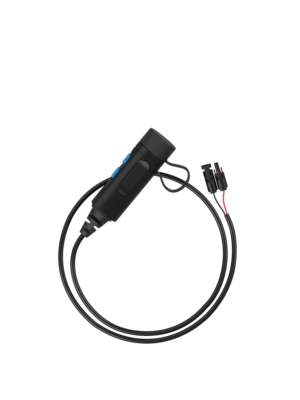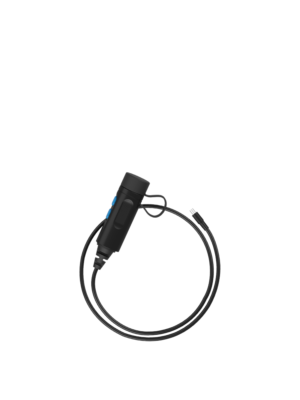7 Critical Survival Skills To Keep You Alive In An Emergency
By Just In Case Jack |
Last Updated: February 25, 2023
Do You Know Which Survival Skills Are The Most Important?
If you’re new to survival (or a veteran), it’s worth reviewing the 6 most important basic survival skills.
The basic survival skills that will bring you home to safety.
We get to choose from many survival skills, but the following 6 are the ones you should master first.
Because these are the 6 survival skills that will keep you alive long enough for rescue.
As A Way To Introduce You To Skilled Survival, We’re Giving Away Our #78 Item Complete Prepper Checklist. Click Here To Get Your FREE Copy Of It.
1. Finding and Purifying Water
In most survival situations, water is first.
Why? Because water quickly becomes a player. If not immediately, at least within the first 24 hours.
The human body makeup is 60% water, requiring constant rehydration. Human tissue is saturated with water.
- Water protects and lubricates our internal joints, ligaments, and muscles.
- Water is the primary constituent of our blood. It carries oxygen and nutrients from our lungs and digestive tract to the body’s cells.
- The power that drives the pumping action of our heart is an electrical impulse. These pulses are derived from electrolytes dissolved in the water.
- Your brain tissue also requires water to keep neurons and synapses functioning properly.
The human body is designed to carry a specific percentage of water in its tissues. If the percentage of water carried becomes less than normal, dehydration occurs.
Dehydration is what drives us to the water fountain.
Thirst can best be described as dryness of the mouth. The mouth relies heavily on water saturation, to the point of being perpetually wet. The mouth continually produces saliva from the water in its tissues.
So the first sign of dehydration is through the mouth. The dryness we sense indicates an out-of-balance water situation is developing.
Which is the human condition we call Thirst.
Often people are busy with some task and ignore this first thirst warning. Instead, putting off a trip to the water fountain or the kitchen sink.
The second warning the body gives is a mild headache that will continue to worsen over time.
Other dehydration symptoms include:
- reduced urinary output
- lethargy
- the inability to perspire or produce tears
- nausea
- rapid heart rate
- tingling of the skin
- high body temperatures
- hallucinations
- heat exhaustion
- eventually death
Not being able to find and purify water is of primary concern when one is in a survival scenario.
The dehydration process begins when you are lost, hurt, and need rescue.
Plus, in survival, you’ll have to increase your excursion and exposure so that you will dehydrate faster than normal.
So it’s of utmost importance to continuously find, purify, filter, and drink water when in survival mode.
I realize it’s an overused cliche to say;
“It could mean the difference between life and death”.
But in the case of finding water in a survival situation, it’s both profound and accurate.
It’s about time you master this essential survival skill and acquire the right survival water filtration tools.
AFTER EARTH Survival Tips – Episode 3: How To Find Water
Sawyer Mini Water Filter

This tiny water filter can process up to 100,000 GALLONS of water through a 0.1-micron filter.
The Sawyer Mini has hose adapters on either side. This design allows you to use a large variety of water retrieval options.
For example:
- Splice it into your hydration pack
- Convert it to a gravity filter
- Use a small piece of hose to gather water out of a small crack
Plus, it has a threaded end that screws onto a small bladder (or any soda bottle) to let you filter and drink on the move.
It also only weighs 2oz and is only 4″ long.
Again, for this price, it’s an excellent survival water filter for daily use or emergencies.
Sawyer Mini Water Filter Review – Can This Filter 100,000 Gallons of Water?
2. Building A Wilderness Survival Shelter From Scratch
If you ever have to spend the night in the wilderness, you want something between you and that wilderness.
You’ll want a wilderness survival shelter. And in some circumstances, it’s more than just a preference, it’s downright essential.
A survival shelter can sometimes provide something more necessary than these. A good survival shelter protects from extreme elements.
Humans are not designed for extended exposure to the following conditions:
- freezing temperatures
- sweltering heat
- high winds
- deep snow
- driving sleet
- heavy rains
We quickly become dehydrated in direct sunlight in a desert.
We can become hypothermic on the frozen tundra of the North within minutes (or even in more temperate regions when rain-soaked).
Shelter equals protection like fur to a bear or blubber to a whale.
Yet, unlike the Animal Kingdom, humans have evolved to manipulate our personal environments.
We’ve created the entire concept of “indoors.”
We create living spaces with heating and cooling built-in. They’re also designed to protect us from all forms of precipitation and wind.
We even moderate humidity levels within our homes for additional comfort.
The truth is we’ve flexed our cerebral cortex over thousands of years.
This flexing has led to our modern environments. This process has had the unintended consequence of humans losing our natural defenses against the elements.
So when we go into the wilderness, we must bring our shelters with us. Or quickly create them from what we scavenge.
The water countdown clock will run out in a matter of days, but the shelter clock may expire in a matter of hours or even minutes in extreme environments.
So you must learn the areas in which you travel and what materials are available. That way, you know how to protect yourself quickly from dangerous environmental situations.
The last thing you want is for the rescuers who find your dead body to say:
“Look at all the stuff around he could have used to make a shelter. I guess he didn’t know any basic survival skills.”
The Spider Shelter, My Favorite Debris Type Shelter
The TACT Bivvy Emergency Shelter
And while mastering the skill of building survival shelters is something every serious survivalist should learn. You might also want to prepare for a survival emergency with a TACT Bivvy.
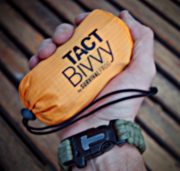
It’s lightweight and made from mylar to trap your body heat.
This little emergency sleeping bag could be the difference between dying of exposure to hypothermia or surviving the night.
Add one to your vehicle, survival pack, and bug out bag, and get home bag.
Bug out Bag Shelter – Survival Frog TACT Bivvy Review
3. Starting A Fire Without A Lighter
Firecraft is the art of making fire.
Those of us who are serious about basic survival skills know how important the ability to create fire is.
Fire is useful in all survival scenarios and can be a lifesaver in many of them.
Fire gives us 3 critical survival elements:
- Heat
- Light
- Smoke
Hypothermia can occur at low temperatures, especially in soaked clothing.
The heat from a fire can keep us from dying of hypothermia. It warms our bodies and dries wet clothes. Heat is also essential to kill parasites and bacteria in raw meat.
Light from a fire can signal at night, as can the smoke from a fire during the day. The light from a fire illuminates the dark, which helps keep wild animals at bay.
Smoke from a fire can also be used to smoke raw meats, an ancient method of food preservation. Smoke also can help protect you from the biggest killer of them all, the mosquito.
So as the Blind Preist told Frankenstein’s monster,
“Fire is Good. Yes. Fire is our Friend”.
WebM Test II – Blind Priest Scene
And the key to successful fire starting is preparedness and having the right survival gear.
Starting a fire can be as difficult or as easy as you make it.
If you have fire-starting tools (survival lighters, survival matches, etc.) with you, then a raging bonfire is only a few minutes away.
You should consider wearing FireLaces which are 550 paracord bootlaces that include Ferro rods.
Survival Frog Fire Laces Review (I started a fire in my office!)
But what happens if you don’t? How prepared are you to make a fire without ANY survival tools?
Please don’t use the excuse that you’ll always have a Bic on you at all times.
We all know sh*t happens, we forget, and mechanical devices fail, especially at inopportune times. It’s wise to invest in natural fire-starting techniques today, just in case.
4. Navigating Your Way Back To Safety
Many a survival scenario begins with one losing their bearings in unfamiliar surroundings.
The technical term for this condition is LOST.
I remember as a youngster watching MASH when Hawkeye tells a colleague they are lost.
“I’ve been lost before and this is exactly what it looks like.”
As a former US Air Force navigator once told me;
“I made a career out of keeping my plane and crew from becoming lost, not that we weren’t “momentarily disoriented” from time to time.”
He also heard an SR-71 pilot say;
“You haven’t really been lost until you’ve been lost at Mach 3.”
The good news is that the condition of being lost is correctable whether you are lost in the desert, dense forest, mountains, or skies at Mach 3.
The Almighty, through Nature, has given us many ways to “find our way.” But only if you learn these “ways” and practice them.
Lost is not good, but it’s not hopeless.
If you take the time to learn the tools, you should never be “lost.”
Having multiple ways to get you back on course in the wilderness is an underrated but basic survival skill worth mastering.
Fire The Basic Class Presentation
5. Survival Signaling To Help Rescuers Find You
Assuming you are in a survival situation where rescue is desirable, one must understand the basics of signaling. Signaling is the art of drawing attention to oneself.
In the grand scheme of things, we are tiny compared to our vast planet.
Finding someone on the ground is difficult, especially if nothing is done to draw attention to oneself.
So what are the fundamental principles for effective signaling?
- Contrast
- Intelligence.
First, you must contrast with your environment.
Second, the potential rescuer should see your signal and recognize it not as an anomaly of nature. Your signal should be a clear sign of intelligence at work.
There are many ways to accomplish this.
Many of these ways even complement each other. So it’s always so sad to hear when rescuers struggle to locate the lost or missing in the wild.
Maybe the rescue team was too late, and the unfortunate soul was gone before the search began.
But what about the poor souls who saw the rescuers? Yelled at the top of their lungs. Waved their arms frantically from the forest floor. Only to helplessly watch the helicopter cruise past and their rescue hopes vanish.
If only they had taken some time to master the basic survival skills of signaling.
Learn Military Skills to Signal Search and Rescue in a Survival Situation!
6. Learn Your Basic Survival Medical Skills
A survival situation goes from bad to worse when there’s an injury.
Whether it’s a sprained ankle or a severe wound, you’re in deep trouble if you don’t know how to tend to these medical emergencies.
Even if it’s just learning how to turn a bit of paracord into a stretcher or using a belt as a makeshift tourniquet.
This knowledge is critical and could save your life in dire circumstances.
That’s why I recommend –
The Survival MD Training Guide
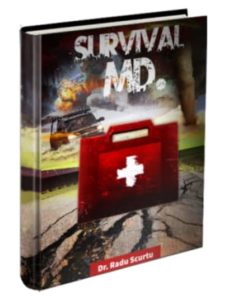
It shows you how to treat yourself and your loved ones in an emergency when doctors, pharmacies, and hospitals are out of reach.
It’s a simple and straightforward step-by-step program. And you don’t need any medical training… plus: there’s no need for a medical professional to look over your shoulder.
And here’s the best part: You won’t need to spend a bucket load of cash or waste weeks poring over hundreds of pages either because there are no weird medical terms to learn!
It’s so easy; a 12-year-old can understand it.
You’ll be amazed at the difference it makes to finally know how to use your medical supplies and protect your family from even the worst medical emergencies.
7. Food Acquisition To Stave Off Starvation
In most survival scenarios, immediate rescue, water, and shelter are the initial priorities. We introduced them already because they are more important than food acquisition.
Food acquisition should not be at the very top of a survival skills priority list. Why? Because Man can live for weeks without food but can perish quickly without water or shelter.
That being said, perhaps you have long-term plans for living in the wilderness. Perhaps society has collapsed, or a pandemic has forced you away from your fellow man.
Whatever the reason, if you must live for weeks in the wilderness, you’ll need food and nourishment.
To understand what foods you need, you must understand what nutrients your body requires. Carbohydrates, fats, proteins, fiber, vitamins, and minerals are required to survive long-term.
- Carbs and fats provide the necessary energy.
- Protein assists in the building and repairing of muscles.
- Vitamins and minerals are critical for efficient bodily functions. Functions such as the immune system prevent diseases.
- A certain fiber level is also necessary to keep everything moving through your body.
So where can you find these substances in nature, and how can you acquire them?
Fish, small game, edible plants, berries, fungi, and pine trees are valid wilderness food supplies.
The average man needs 2500 calories daily to sustain weight and the typical female 2000 calories. This is based on a nominal level of activity.
However, if you are in survival mode, you will be:
- moving long distances over rough terrain
- carrying gear
- gathering food
- building shelters
You will be burning considerably more calories. Perhaps thousands more.
As A Way To Introduce You To Skilled Survival, We’re Giving Away Our Family First Food Planning Guide. Click Here To Get Your FREE Copy Of It.
- Wild game comes in at about 500 calories per pound.
- Fish and seafood 600-800 calories per pound.
- Green plants around 100 calories or less per pound.
If rescue is not the goal, but living in the wilderness is the goal, this excessive calorie burn will make food acquisition a continuous struggle. Similar to the continuous need to find and purify water.
Food acquisition no longer consists of stopping by the grocery store on your way home from work. Or call the local pizza joint for the deal of the day.
No, finding enough nutritious calories just became your new full-time job. You better know what the hell you’re doing.
Using a Compass to take a Visual Bearing
How To Master These 6 Basic Survival Skills
There are 2 things you need to do to master any skill (especially Basic Survival Techniques).
- Learn
- Practice
That’s it.
If you do both of these properly, then you will eventually master them. It’s not a matter of if, but when.
However, if you learn but don’t practice, you are book smart but skills dumb. You might be able to explain how to survive, but you’ll fail miserably when put to the real test.
If you practice but don’t learn first, then you’re just messing around. You won’t be practicing the right basic survival skills or becoming proficient in any of the 6 critical survival skills we discussed today.
That’s for certain.
Prepare, Adapt, and Overcome
“Just In Case” Jack
P.s. Are you ready for the tough times ahead?
Find out now by taking my short Readiness Score Quiz – it’s absolutely free.
Once complete, you’ll know exactly where you stand on the “fragile” vs.” resilient” spectrum.
So click here to start the Quiz….And don’t worry; the questions are so easy a 3rd grader could answer them.
Click on the image to begin the Quiz and find out once and for all if you’re part of “The Fragile Masses” or “The Resilient Few.”

Get My 10 Steps To Basic Preparedness Video For FREE.
Plus daily survival tips (unsubscribe anytime).
Recommended Reading
Please Support Our Sponsors
Solar Power Generator Discounts Along With Free Shipping
- 10% OFF for Jackery Solar Generator 2000 Pro Series with code "JADEAL"
- 10% OFF for Jackery SolarSaga 200W Solar Panel with code "JADEAL"
- 10% OFF for Jackery Solar Generator 1500 Series with code "JADEAL"
- 10% OFF for Jackery Solar Generator 1000 Series with code "JADEAL"
- 10% OFF for Jackery Explorer 1500 Portable Power Station with code "JADEAL"
- 10% OFF for Jackery Explorer 1000 Pro Portable Power Station with code "JADEAL"
- 10% OFF for Jackery Explorer 500 Pro Portable Power Station with code "JADEAL"
- 10% OFF for Jackery Explorer 300 Pro Portable Power Station with code "JADEAL"
- 10% OFF for Jackery SolarSaga 100W Solar Panel with code "JADEAL"

The University of Georgia is represented by the Georgia Bulldogs . The Bulldogs participate in the Southeastern Conference's (SEC) Eastern Division of the NCAA.
They play their home games in the storied Sanford Stadium in Athens, Georgia. The first season in Georgia was in 1892. In 1942, 1980, and 2021, the Georgia Bulldogs won three national championships.
The Georgia Bulldogs have additionally been crowned the National Champion in four additional seasons by at least one polling organization (1920, 1927, 1946 and 1968).
The Georgia Bulldogs are tied for second place in conference history with their 15 conference titles, including 13 SEC titles, and their 59 bowl appearances, which ranks second all-time.
In addition, the program has produced five top picks in the National Football League (NFL) draft, two Heisman Trophy winners, numerous winners of various national honors, and many others.

Longhorns football represents the University of Texas in Austin often known as Texas, UT or the Texas Longhorns. The Longhorns represent the Big 12 Conference in the NCAA Division. They play in Austin, Texas, at the Darrell K. Royal-Texas Memorial Stadium.
The Texas Longhorns are ranked third and seventh, respectively, in terms of all-time wins and win-loss records, with over 900 victories and an overall win-loss percentage of.705.
The legendary program also boasts four national titles, 32 conference titles, 100 First Team All-Americans, and two Heisman Trophy winners.
Get your Texas Longhorns Revival T-Shirt today. The Texas Longhorns Rustic Revival shirt is also a fan favorite.
Many college sports fans like to wear their gear all around town, get your Texas Longhorns Centered gear and show your support.










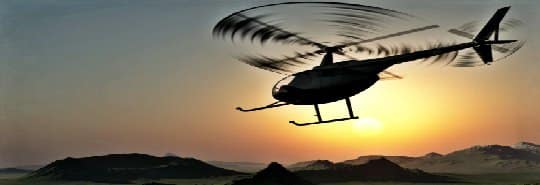
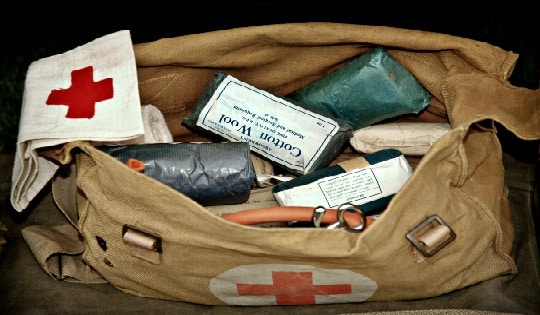




 Gettr
Gettr







